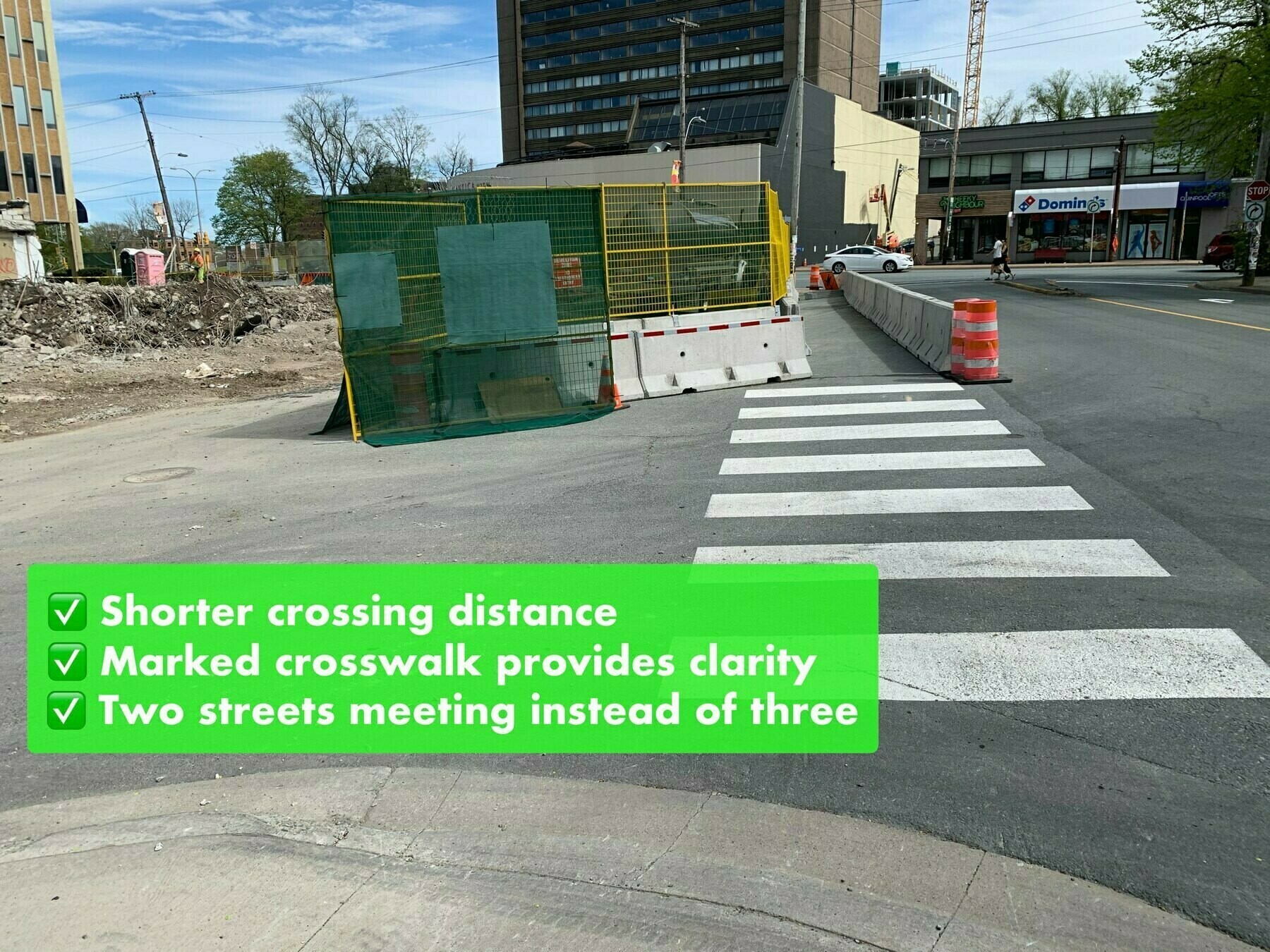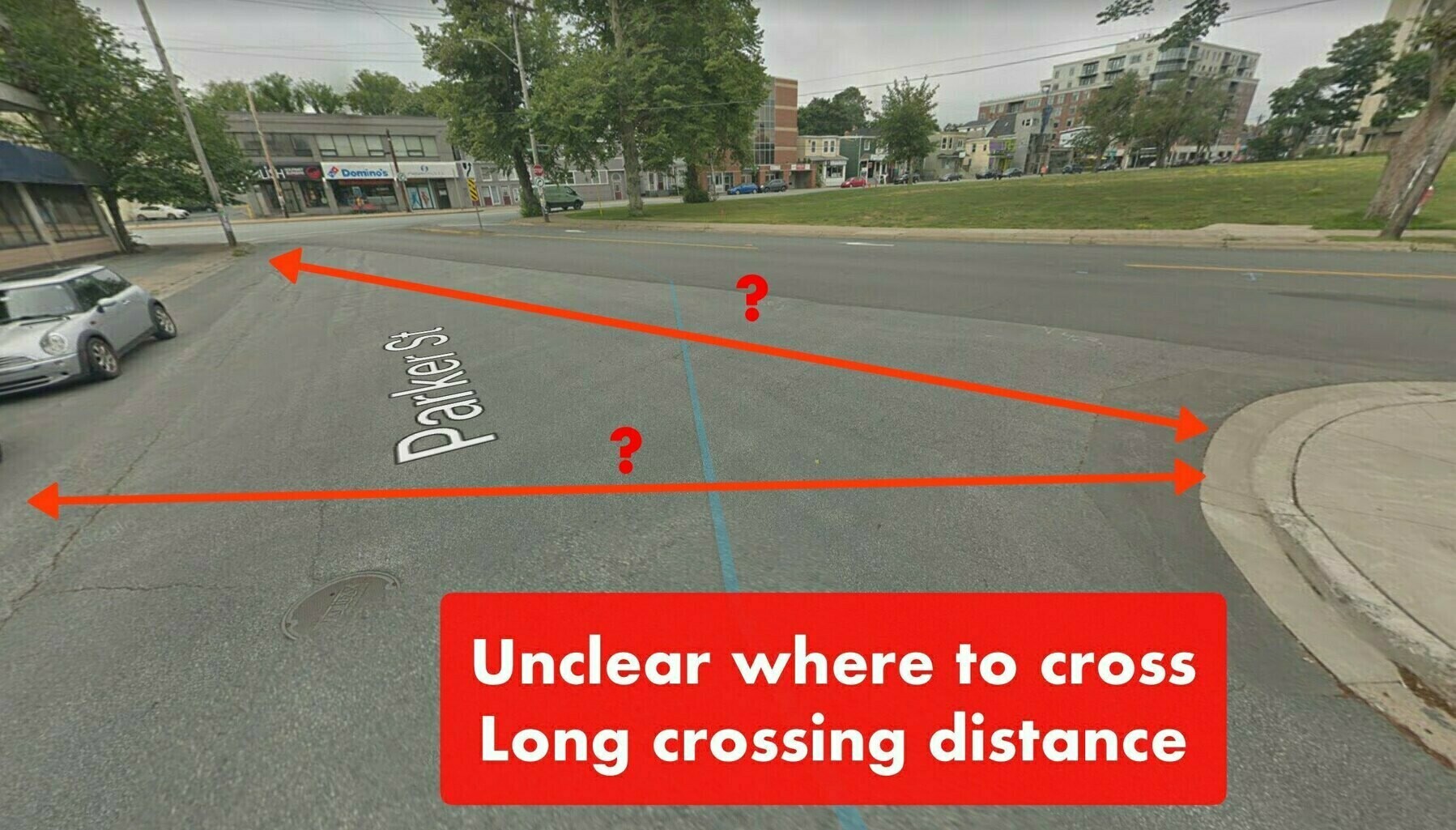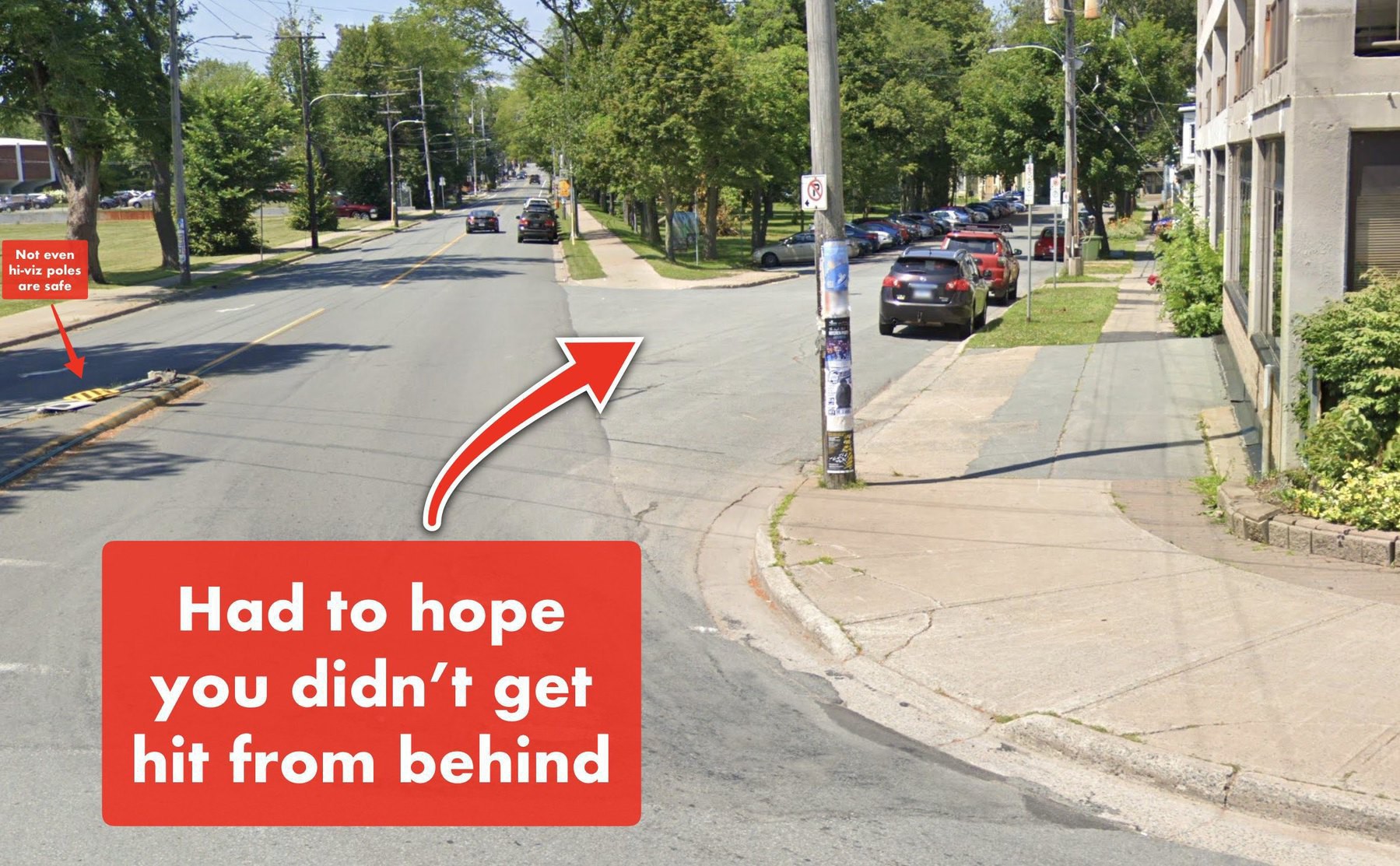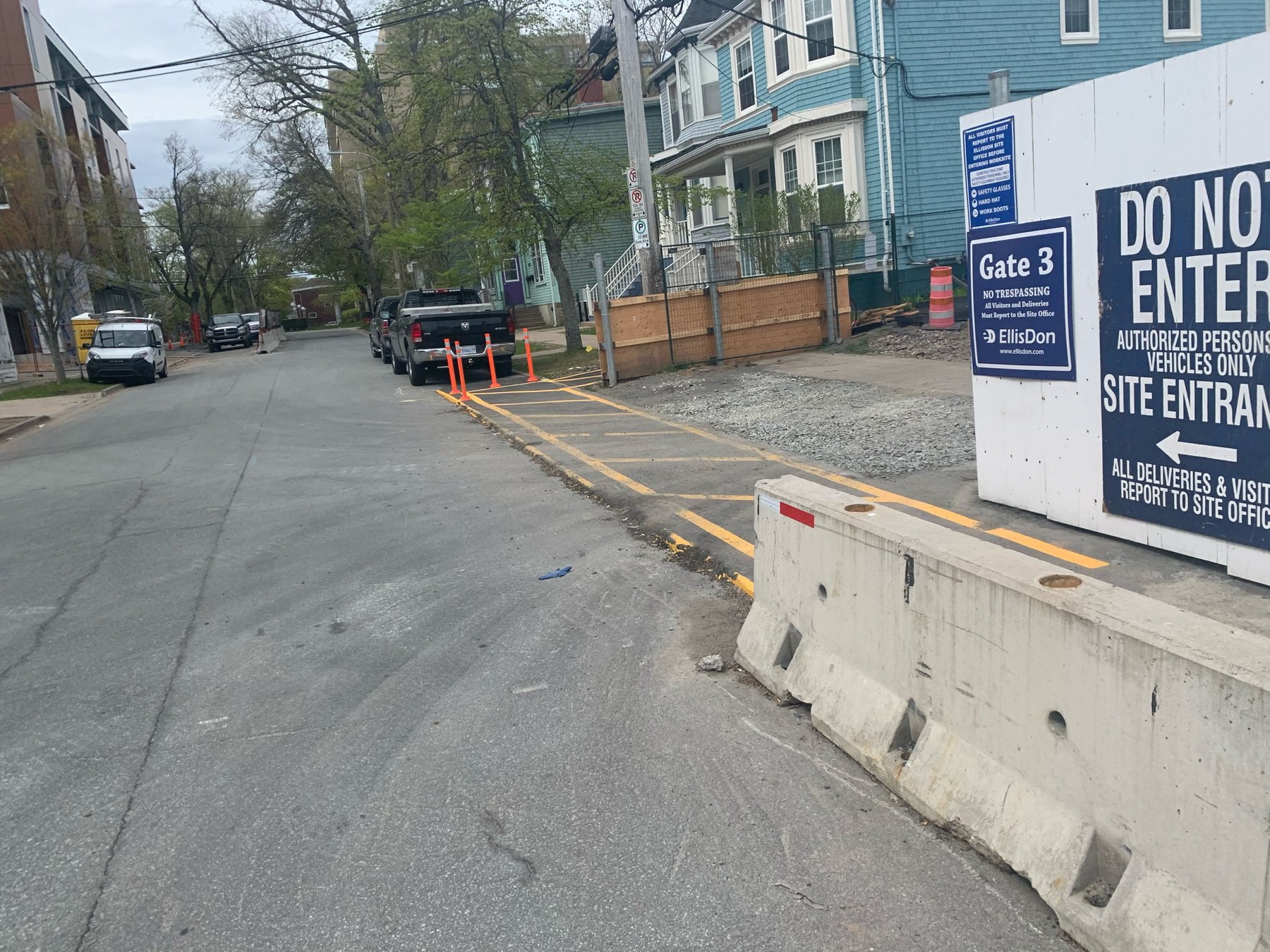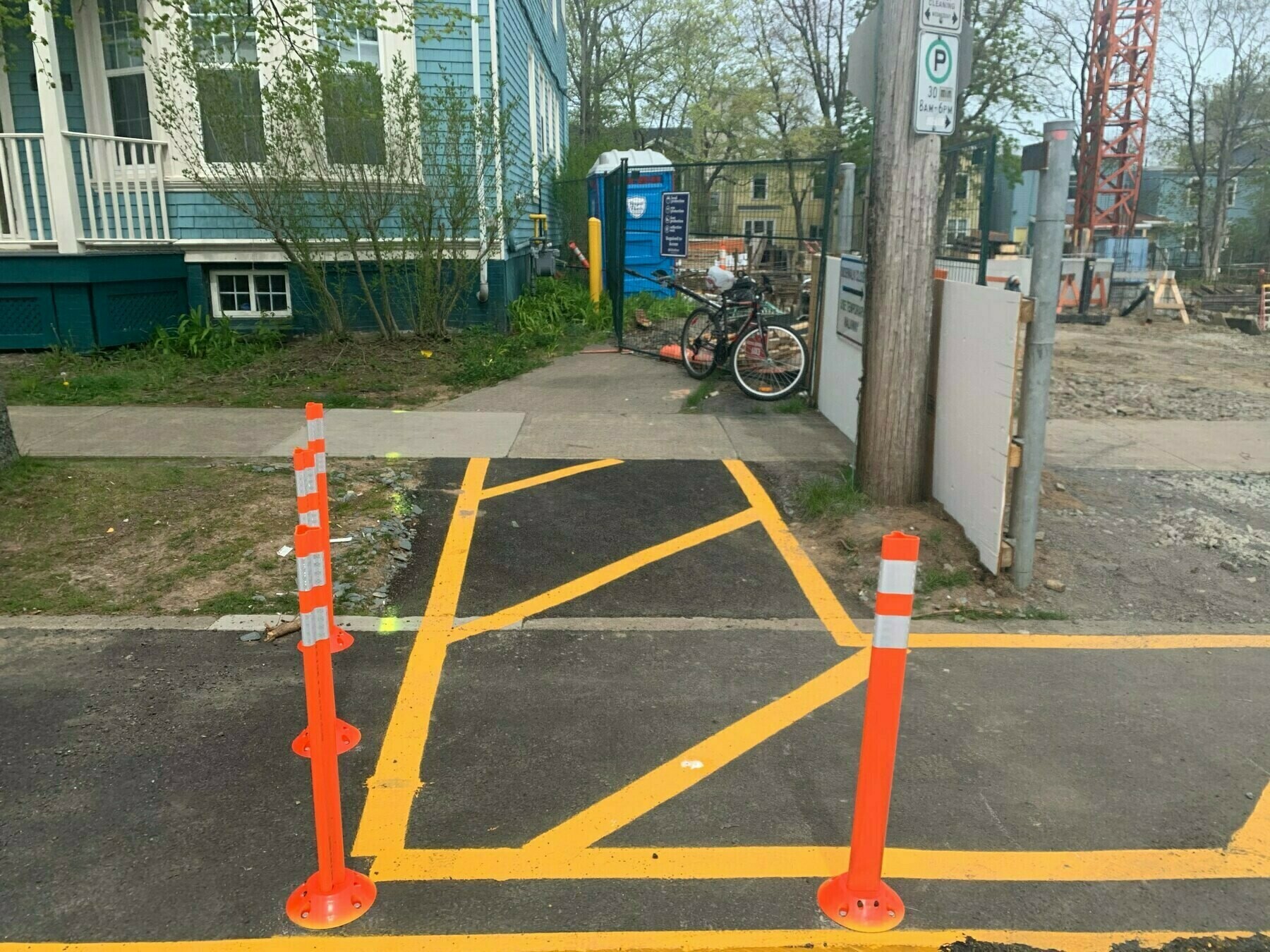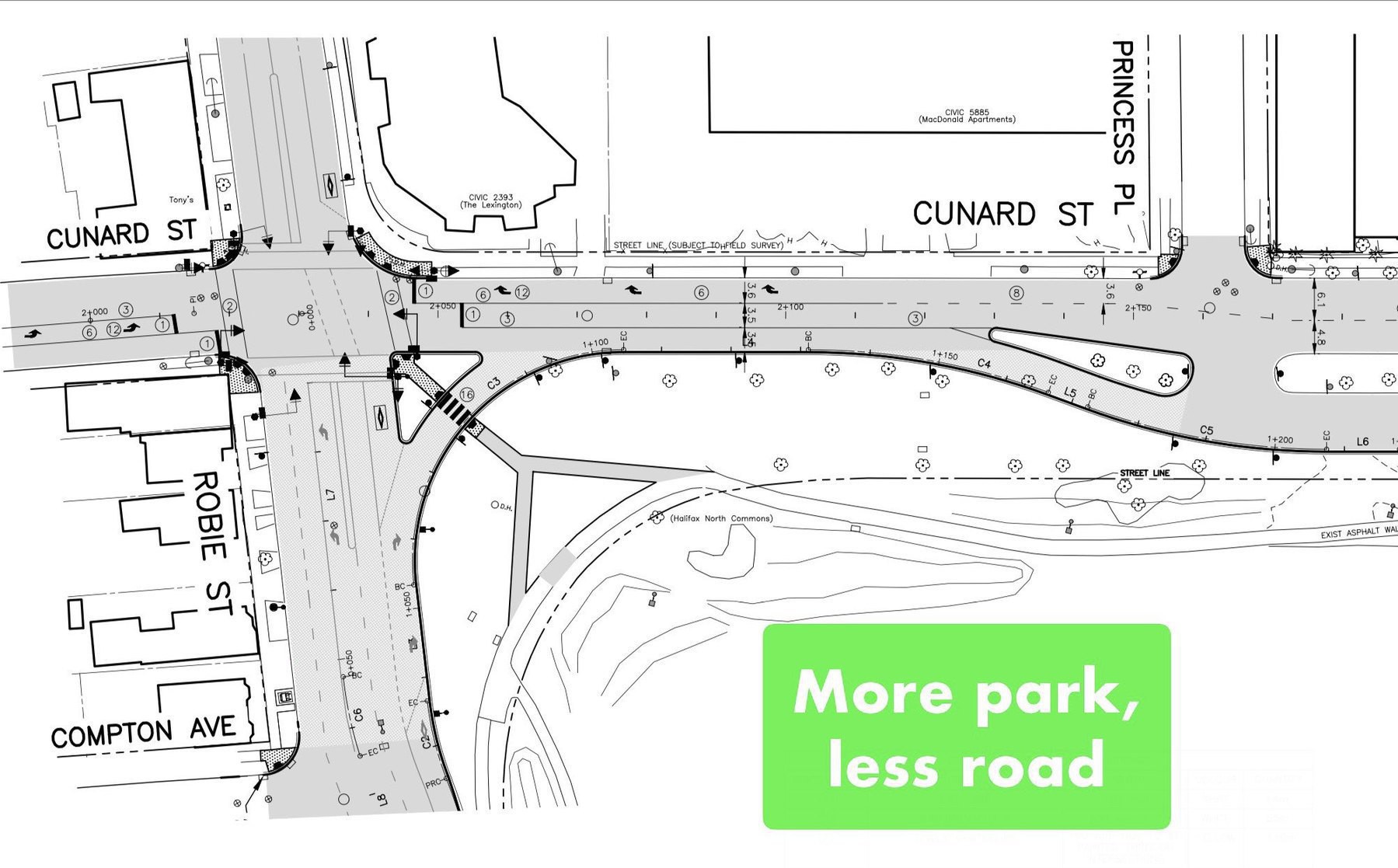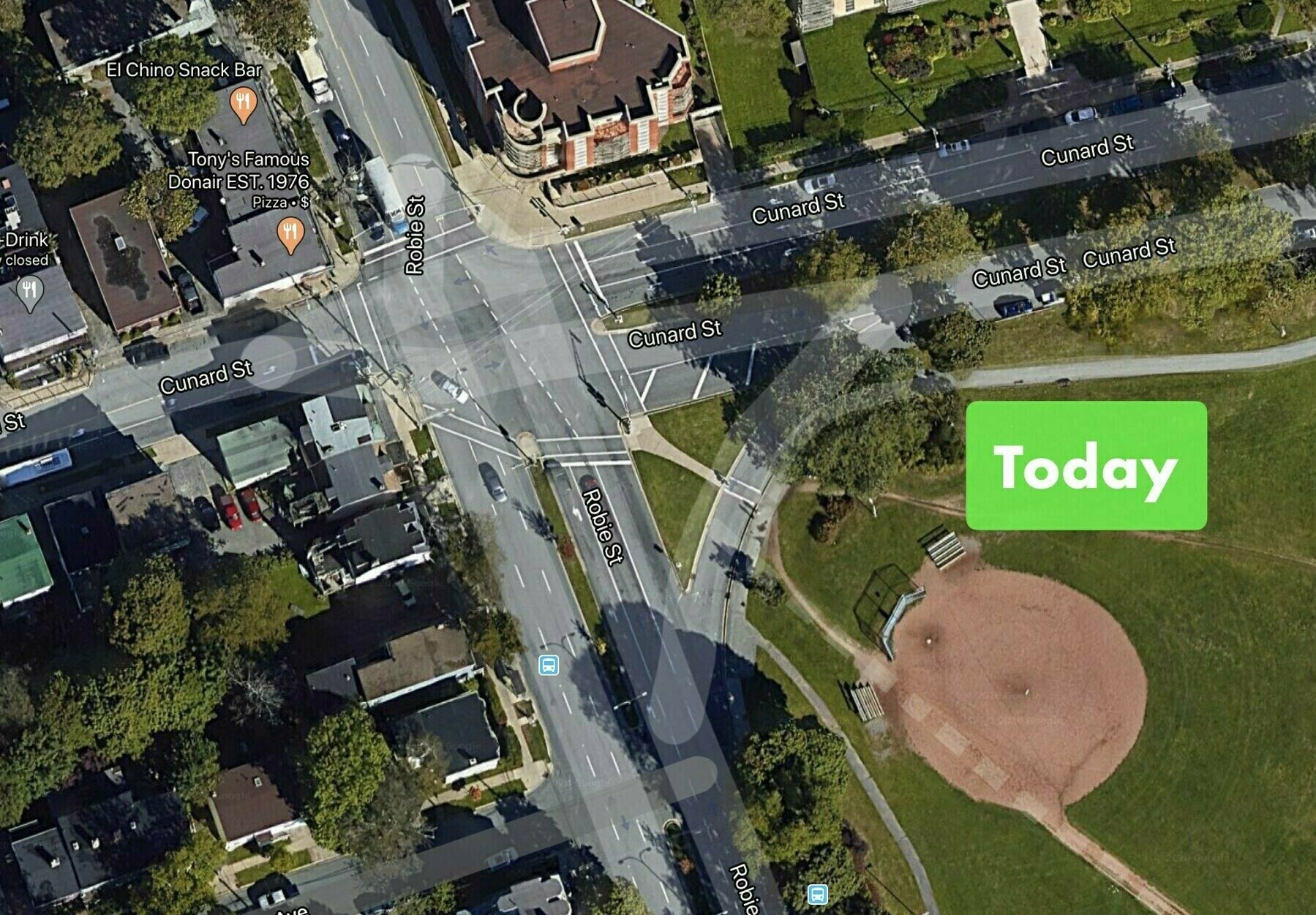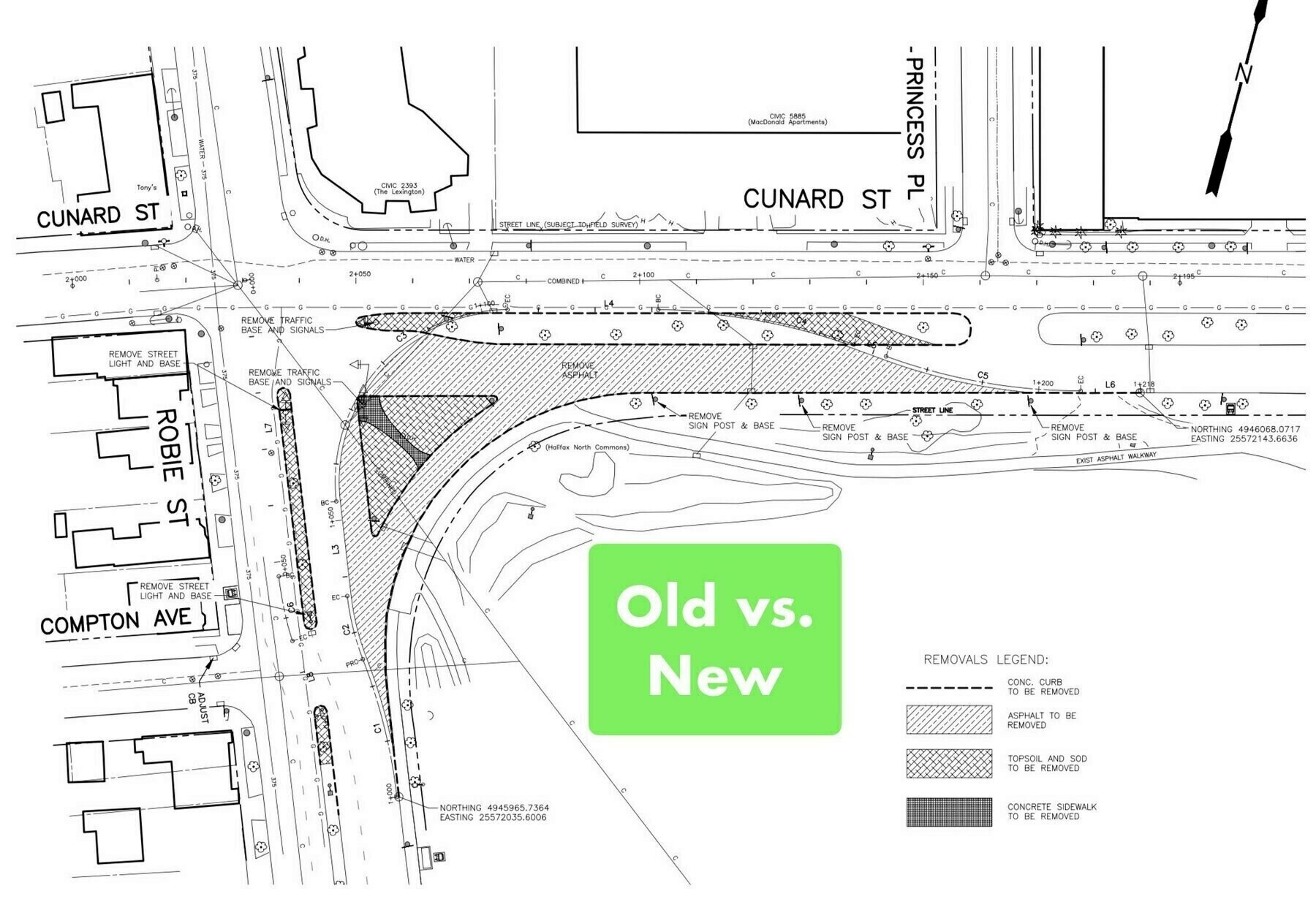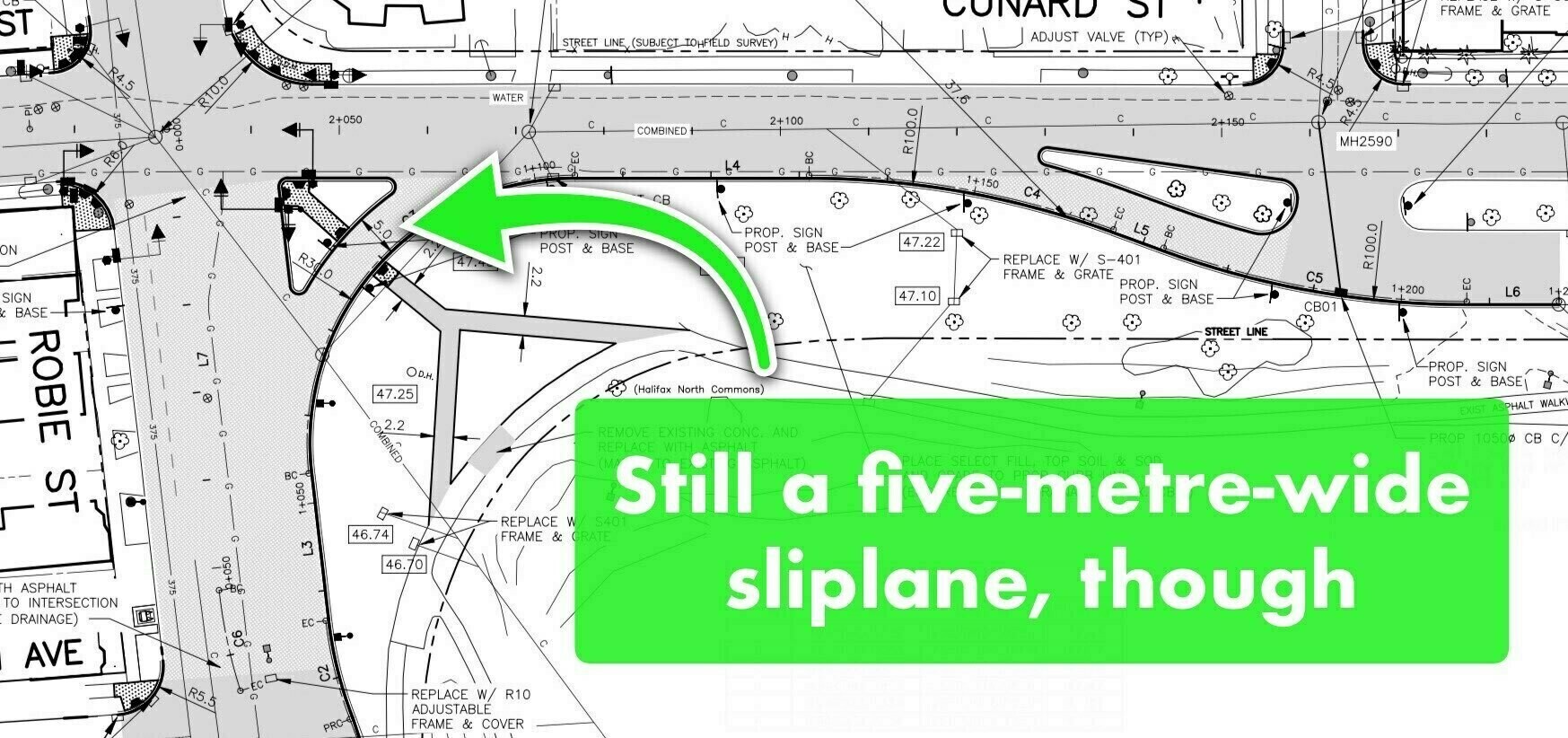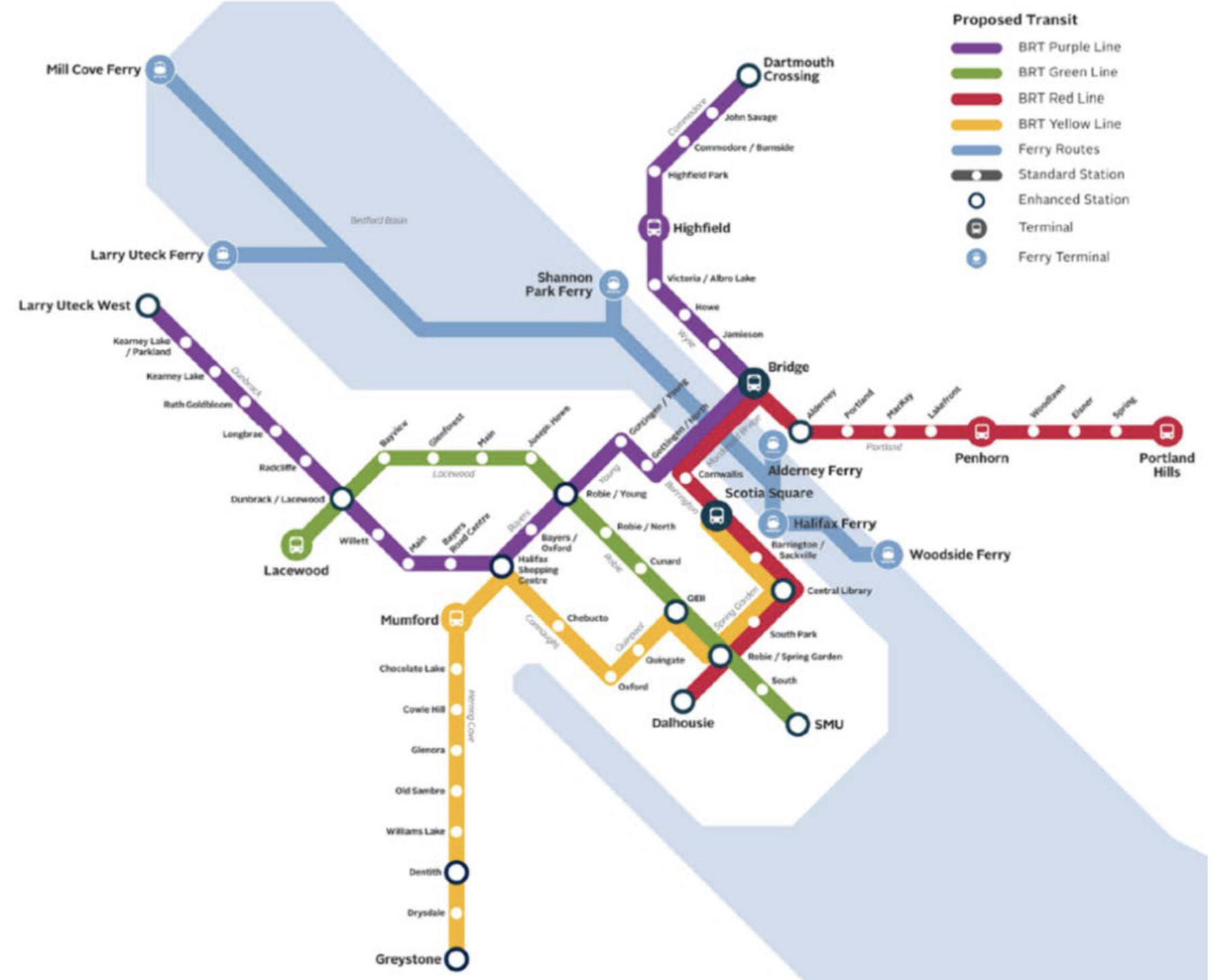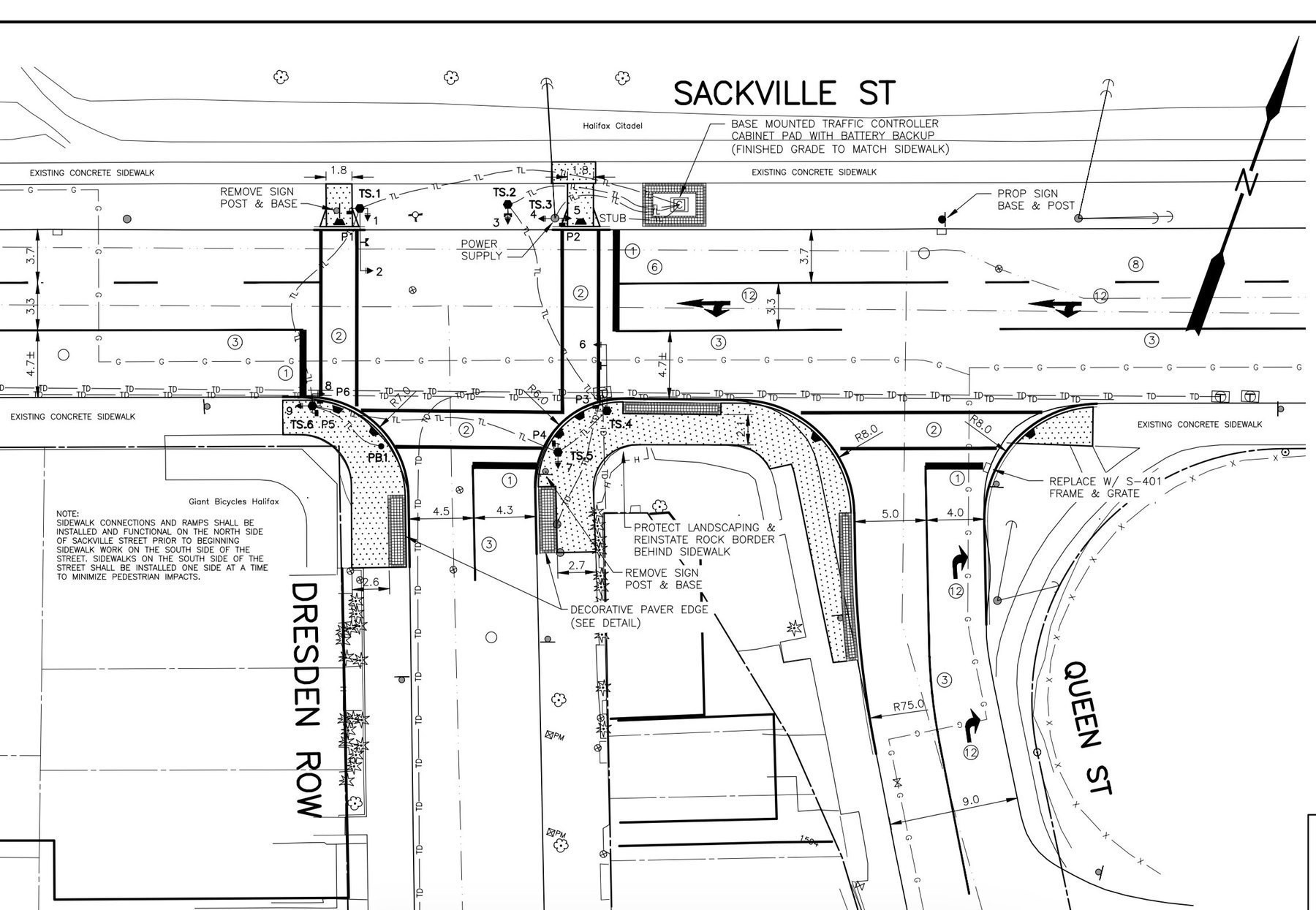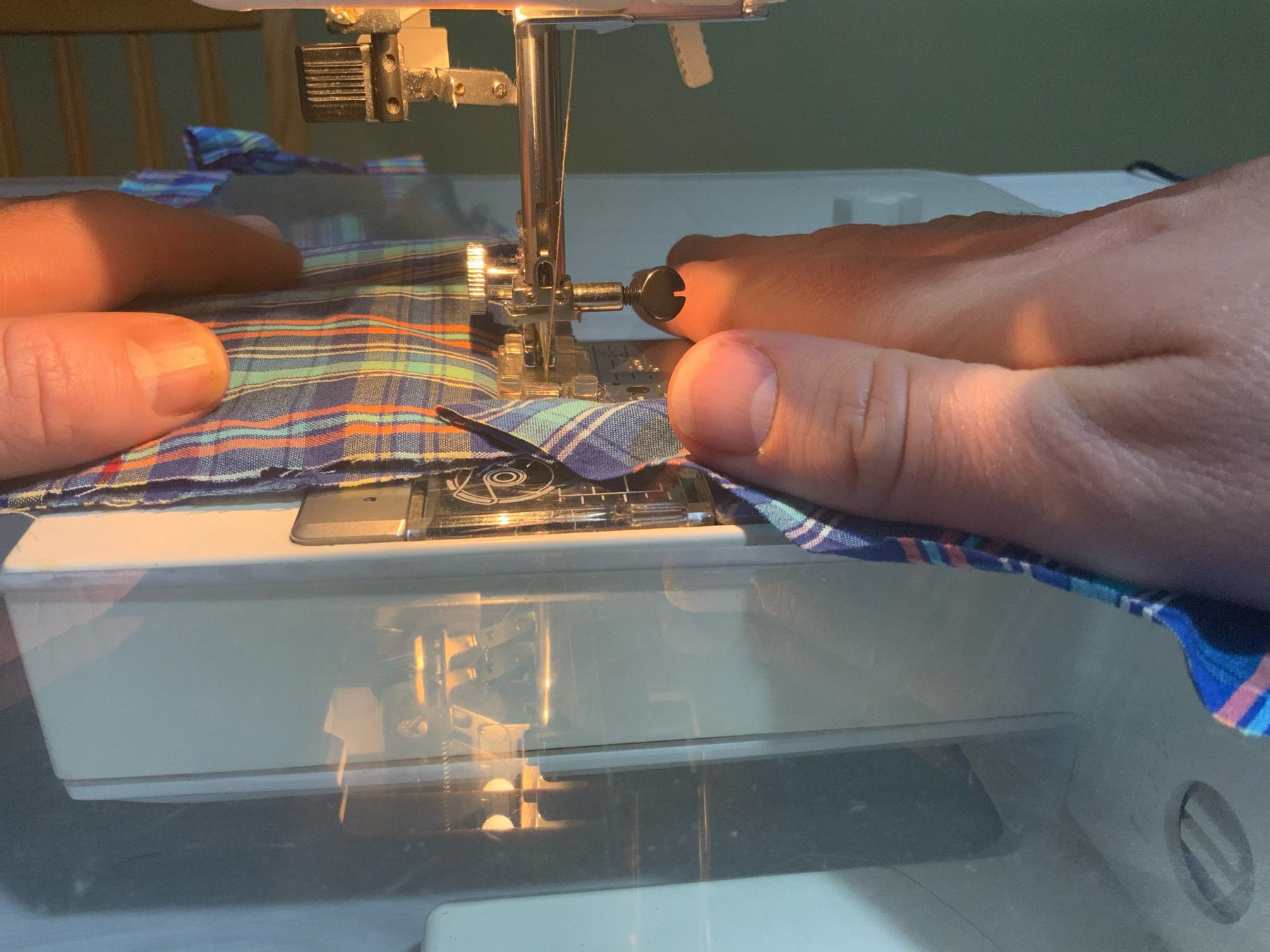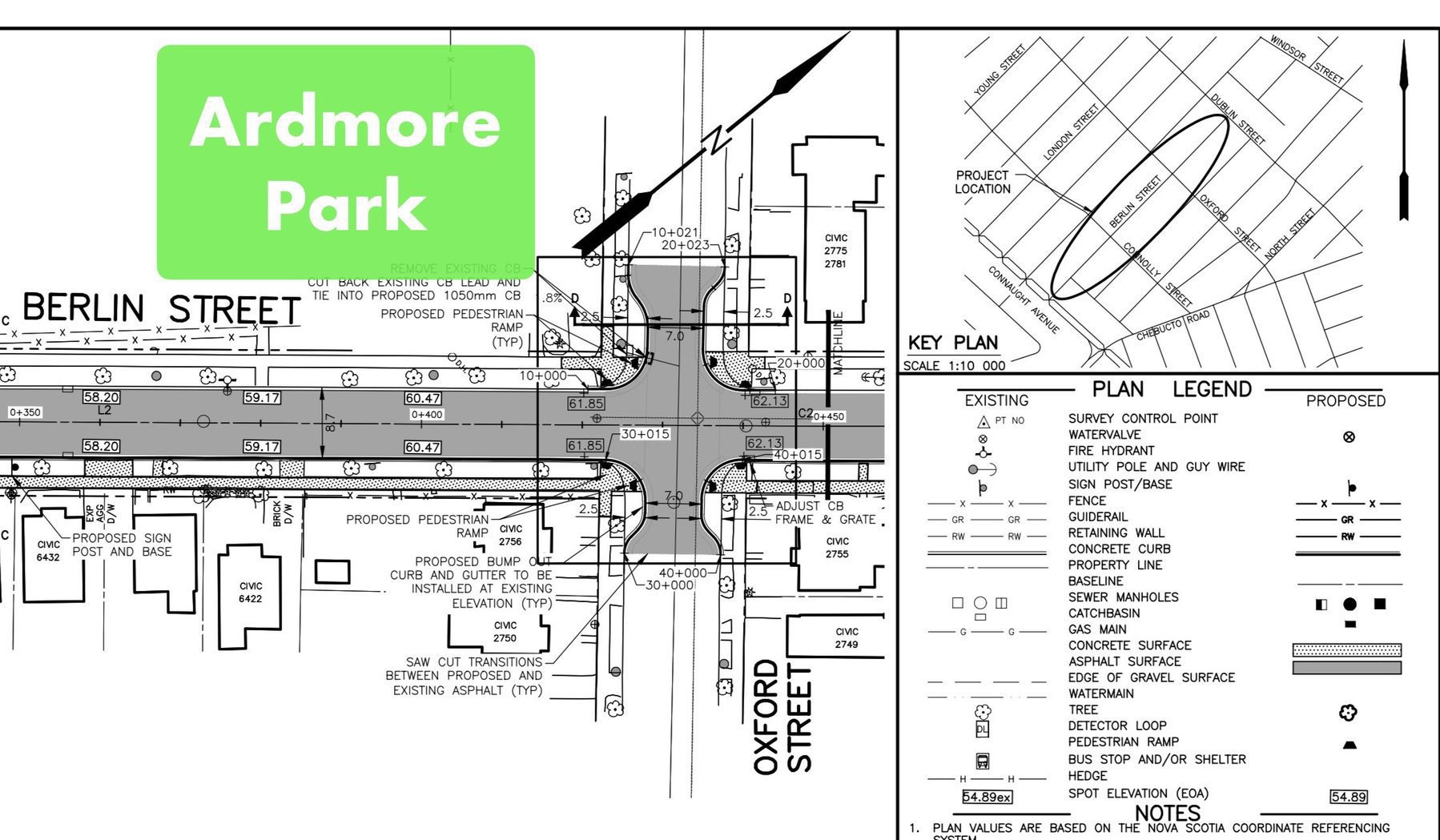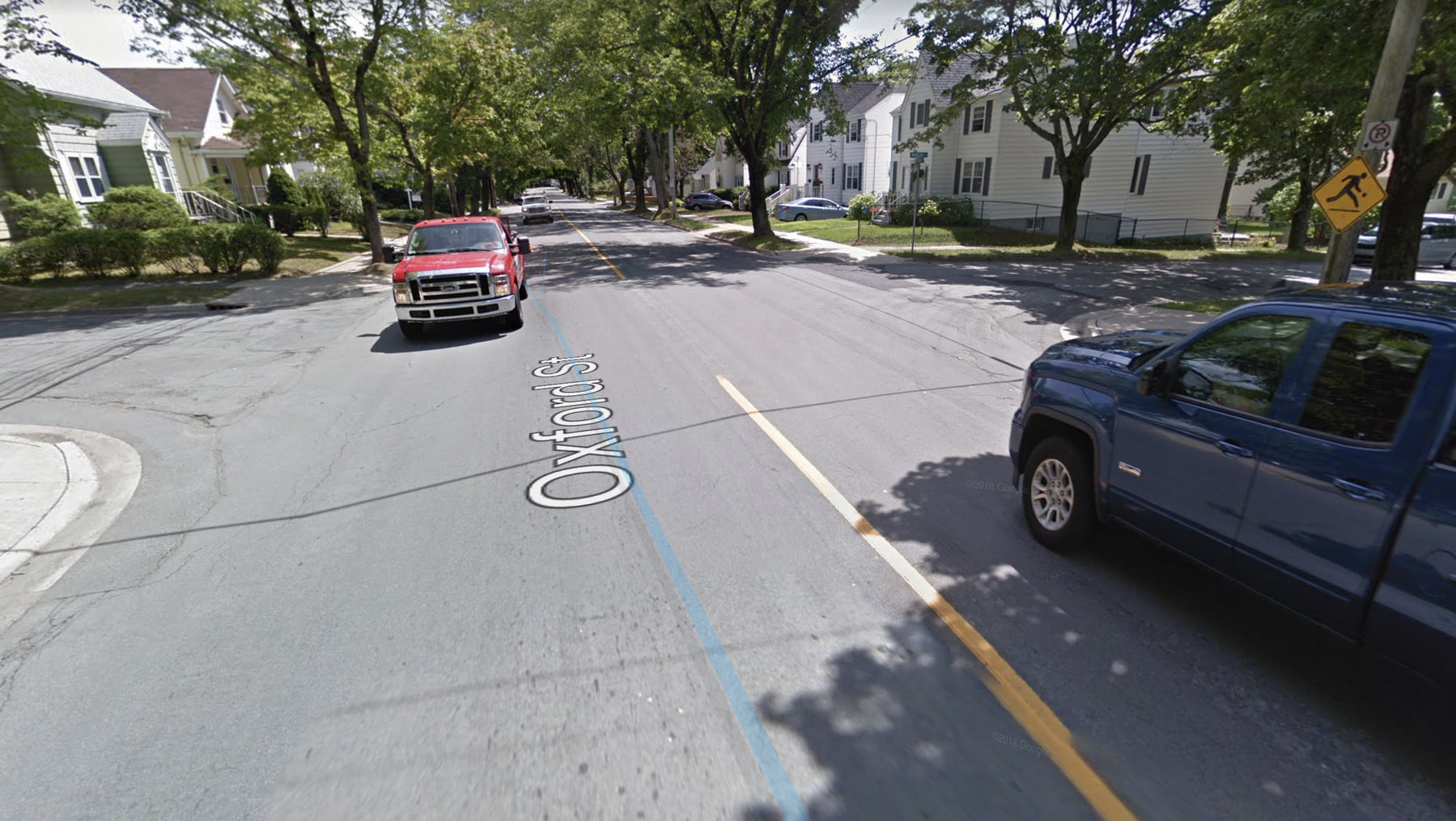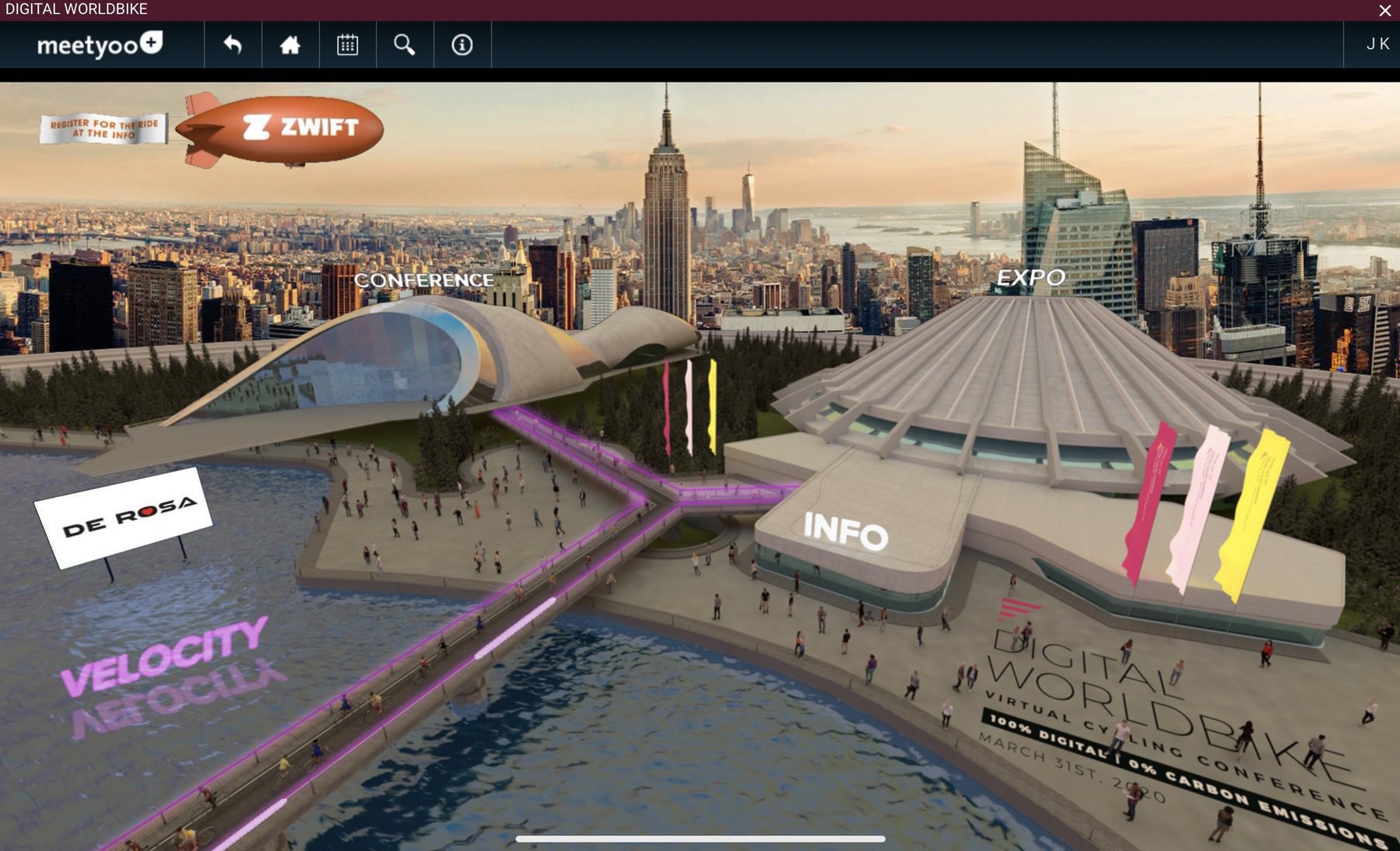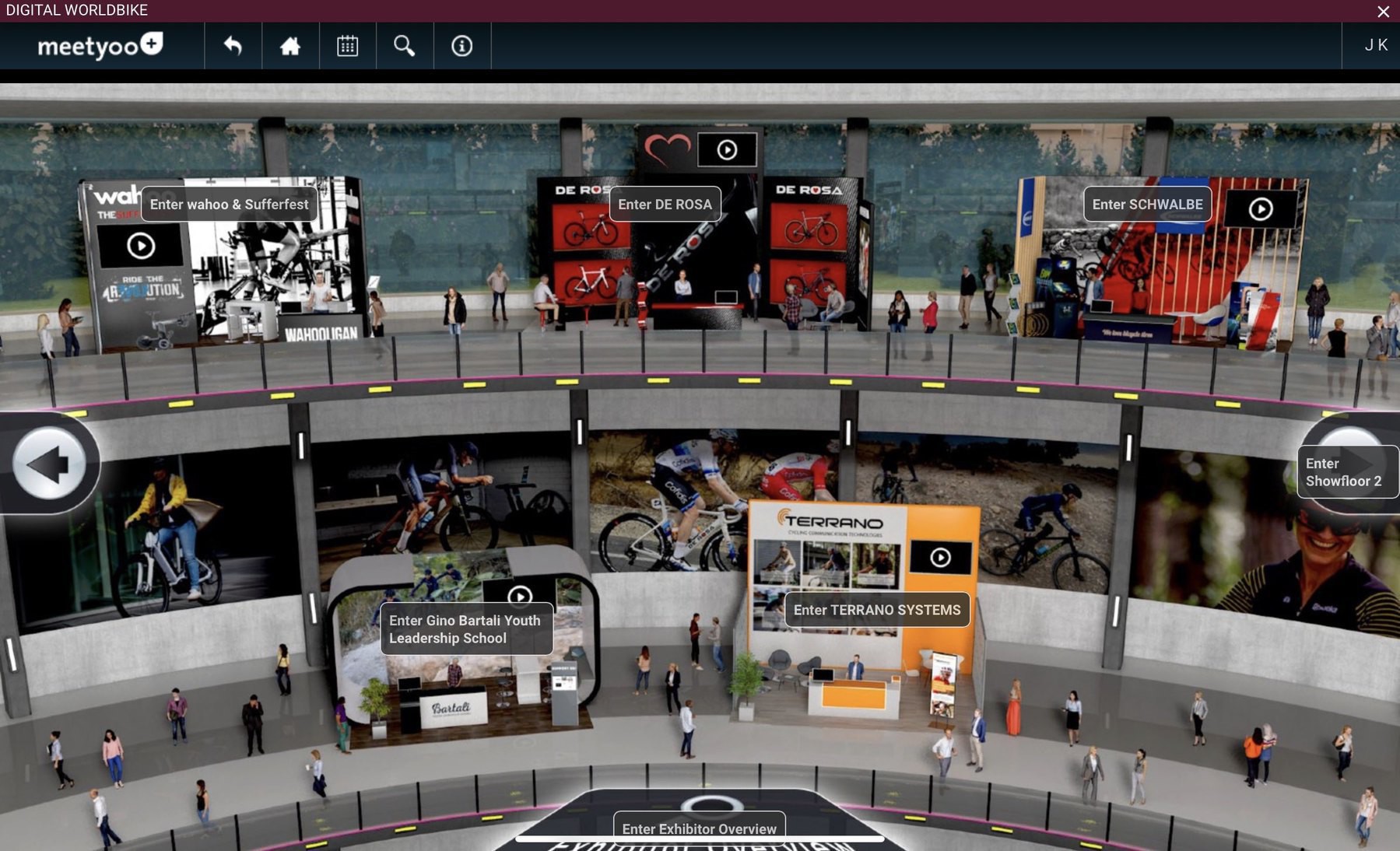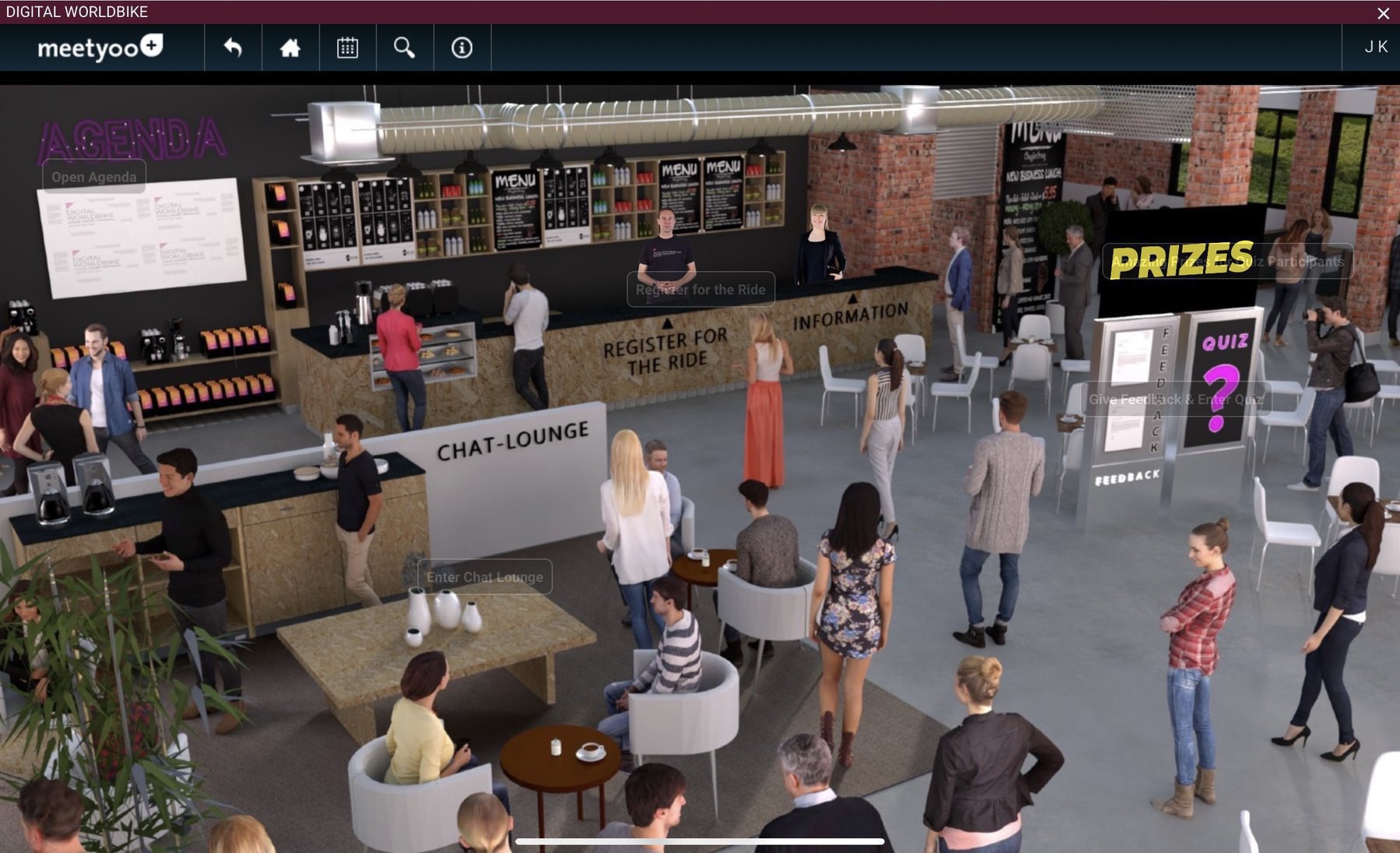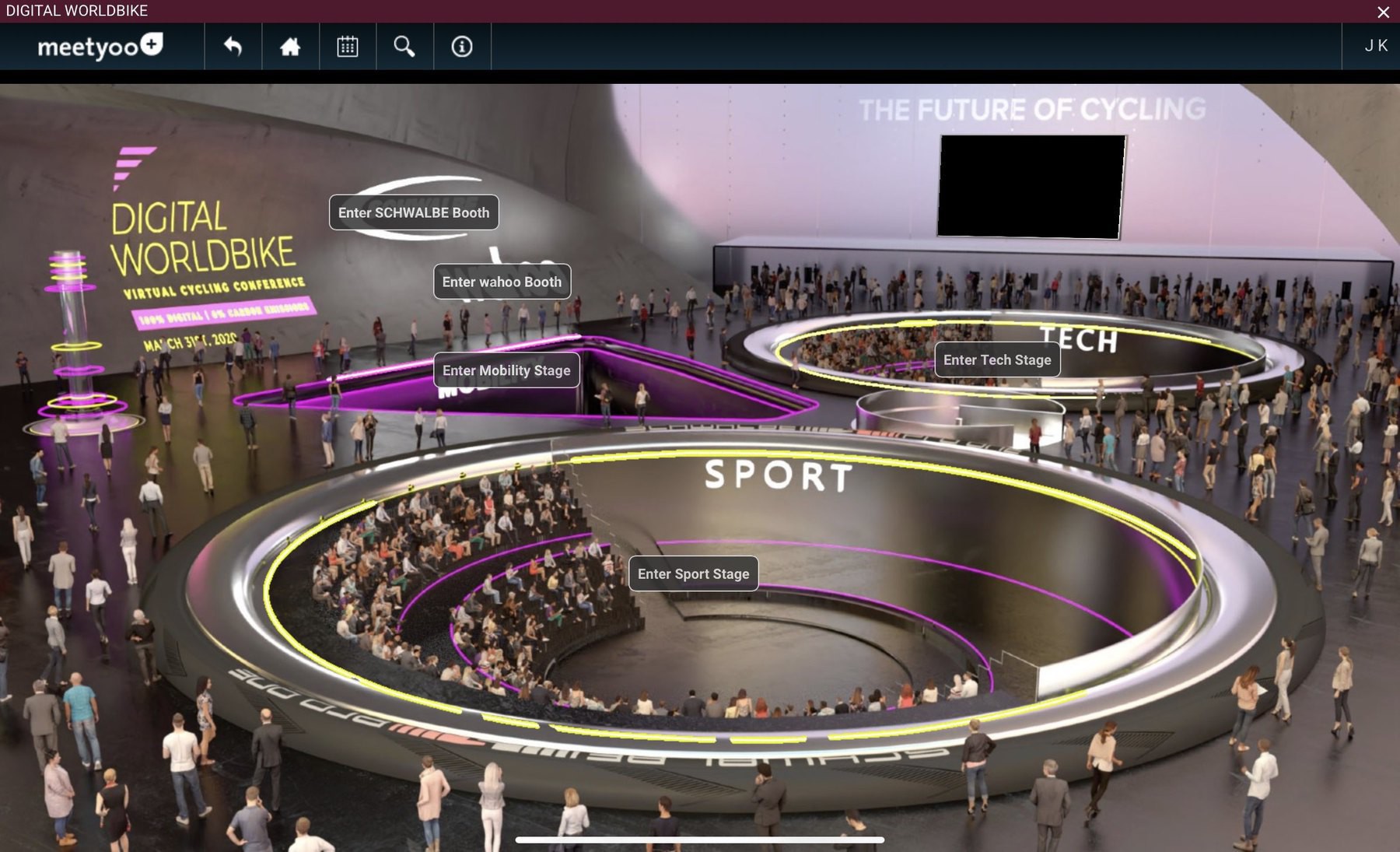Letter to Halifax's Transportation Standing Committee about Pedestrian Beg Buttons
Pedestrian push buttons (AKA beg buttons) are back (again) on the municipal agenda in Halifax this week.
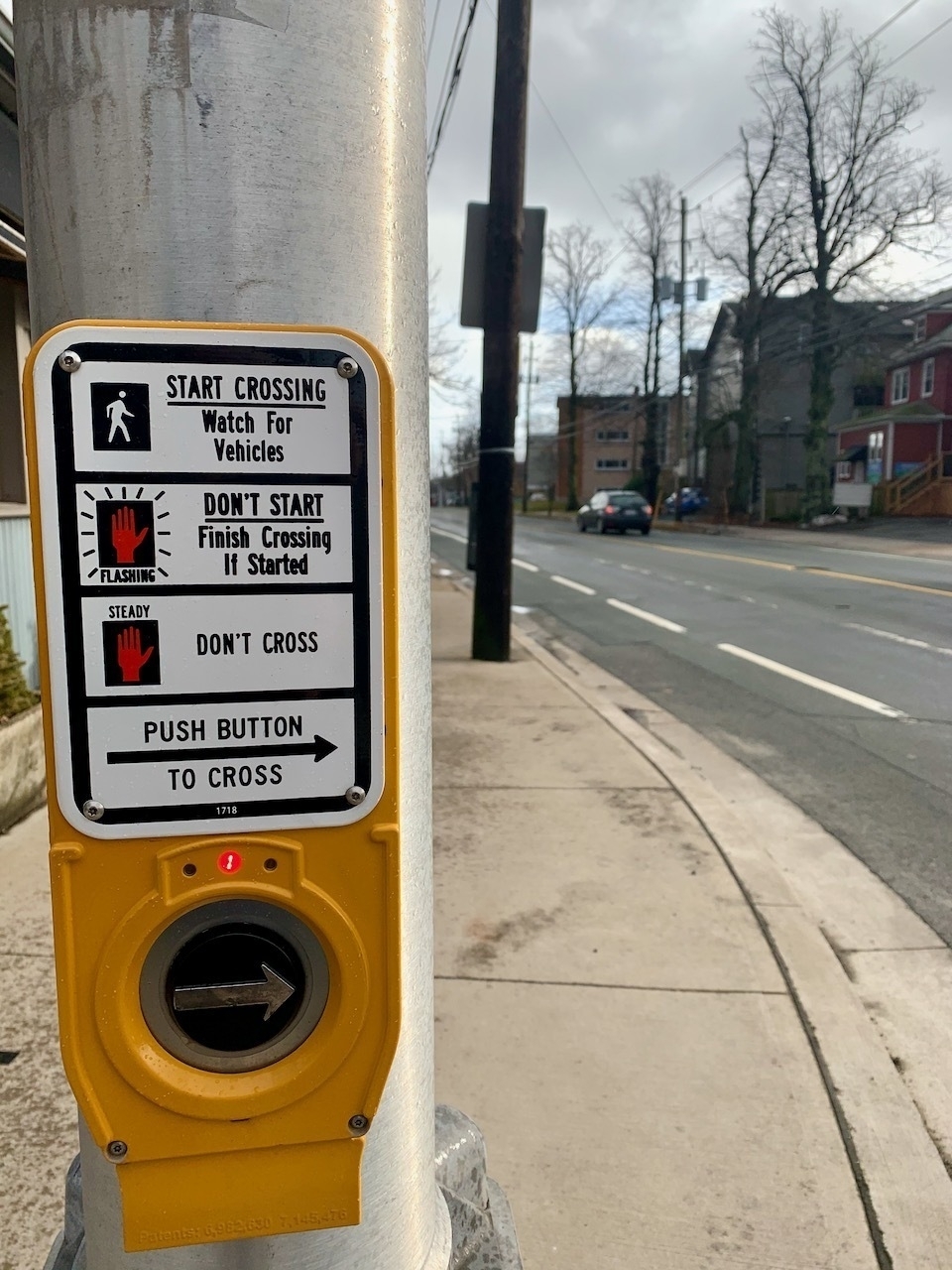
Pedestrians, know your place.
You may remember that back in 2018, after years of trying to make progress internally, Councillors Mason and Cleary requested a staff report “regarding the elimination of the requirement to press a pedestrian push button to trigger a walk signal at intersections for pedestrians throughout HRM.” Staff took almost two years to come back and say (I’m paraphrasing here) “Nah, we’re good.”
That prompted Mason and Cleary to request another staff report in September 2020 on how beg buttons could be “used to activate audible pedestrian beacons only.” This report had a deadline of 120 days, with the work to be completed by September 2021. It also restricted the scope to the regional centre and the transit suburbs.
Staff have come back with a proposal to eliminate beg buttons on some street crossings at certain times of day. Certainly not what the Transportation Standing Committee has been asking for, for YEARS.
I’ve written a letter to members of the TSC expressing how this affects people on bikes, but include more details about people walking, too. Feel free to adapt it to share your points of view. You can find the list of TSC members here. If you just want their email addresses, they are: > becky.kent@halifax.ca tony.mancini@halifax.ca waye.mason@halifax.ca iona.stoddard@halifax.ca paul.russell@halifax.ca tim.outhit@halifax.ca
Just make sure to get your feedback to them before the meeting starts on Thursday January 21 at 1pm.
Letter to TSC
Dear Councillor,
I’m writing about the Pedestrian Push Buttons item at Thursday’s Transportation Standing Committee Meeting. I urge you to direct staff to remove the requirement for pedestrians to use push buttons to cross the street, but ignore the staff recommendation to limit this to mostly crossing side streets, and only during certain hours. Instead, direct staff to allow pedestrians to cross main streets without needing to press a button, at all times of day.
As a member of the board of directors for the Halifax Cycling Coalition, I’m writing today about the effect of push buttons on cyclists, but these changes have a greater effect on pedestrians, so I’ve included pedestrian-focused reasons at the end.
Cyclists should be able to cross at all intersections, at all times of day, not just when a car happens to be travelling in the same direction. The stoplights that don’t change automatically for people walking don’t change at all for people on bikes, requiring them to run the red light. Forcing cyclists to dismount is an accessibility barrier for those who have trouble walking—many disabled people use bicycles as their mobility aid and can’t press those buttons. Cyclists transporting children or heavy goods are also unable to use those buttons. If these streets are busy enough to require help for drivers to cross the street, they should be fixed so that everyone can cross the street.
Please tell staff to remove these barriers and have all intersections always display a walk sign automatically without requiring someone to press a button.
Sincerely,
John Kyle
Further Analysis
The staff recommendation to limit barrier-free pedestrian crossings by requiring the use of beg buttons is flawed for the following reasons.
- Contrary to IMP Goals: The Integrated Mobility Plan’s policies and actions say to “design streets to accommodate people of all ages and abilities, including those with physical, visual, auditory and cognitive disabilities” and to “provide a level of accessibility to all users, regardless of physical disabilities or limitations, for mobility in the Halifax region.” Requiring pedestrians to push a button goes against this policy.
- Describing the prevention of possible delays to people in motor vehicles as more important than removing barriers to pedestrians and cyclists is counter to the IMP’s complete streets hierarchy that prioritizes people who walk or cycle over people in motor vehicles.
- Removing barriers for pedestrians and cyclists is key to hitting the IMP’s mode share targets of shifting people from single-occupant vehicles to walking and cycling.
- Misleading Numbers: The seemingly-high number of intersections they will adjust is mostly standardizing the times of day when pedestrians will have to push a button to cross a street, not removing that requirement.
- Of the intersections they propose removing beg button requirements for, 75% are only being changed to allow crossing side streets unimpeded, not the the main street most likely to have traffic preventing people from crossing.
- 45% of intersections in the regional centre and transit suburbs requiring beg buttons will remain unchanged—that’s 76 intersections
- Accessibility Barrier: The beg buttons remain inaccessible to those with limited mobility, removing their ability to safely cross the street.
- This is made worse when it when it snows, as snow piles prevent people from reaching the buttons.
- Victim Blaming: It puts the onus on vulnerable road users to protect themselves when crossing busy streets instead of providing safe passage by default.
- Prioritization of Cars: The report says it is inappropriate to automatically allow pedestrians to cross main roads, but assumes motor vehicles crossings should still be automatically facilitated. This implies that road crossings by people in cars are more important than people walking or cycling.
- Overstates Negative Impact: It states that having walk signs activate for pedestrians at night will have the greatest impact to road users but doesn’t mention this is the time with the fewest number of road users to delay. The additional impact will be minimal.
- Selective Mention of Noise Pollution: The report mentions noise pollution caused by activation of the audible signal overnight as a negative impact of these changes, but does not mention that removing the requirement to use buttons overnight would prevent pedestrians from triggering the audible signal unnecessarily.
- Preventable Outcome: Equipment to reliably detect pedestrians and cyclists has existed for decades, but transportation staff have opted to only install automatic detection for motor vehicles. Their inaction is why they are now saying that providing equal access to the street for all users will have a disproportionate effect on car drivers. Just because drivers are accustomed to privilege does not make equality an oppression to them.
- Unnecessary Delays: The report proposes delaying programming changes until it is warm enough to apply decals notifying pedestrians of the button operation. The only downside to not having decals in place is that people may push the beg buttons unnecessarily. That is no reason to delay implementation.
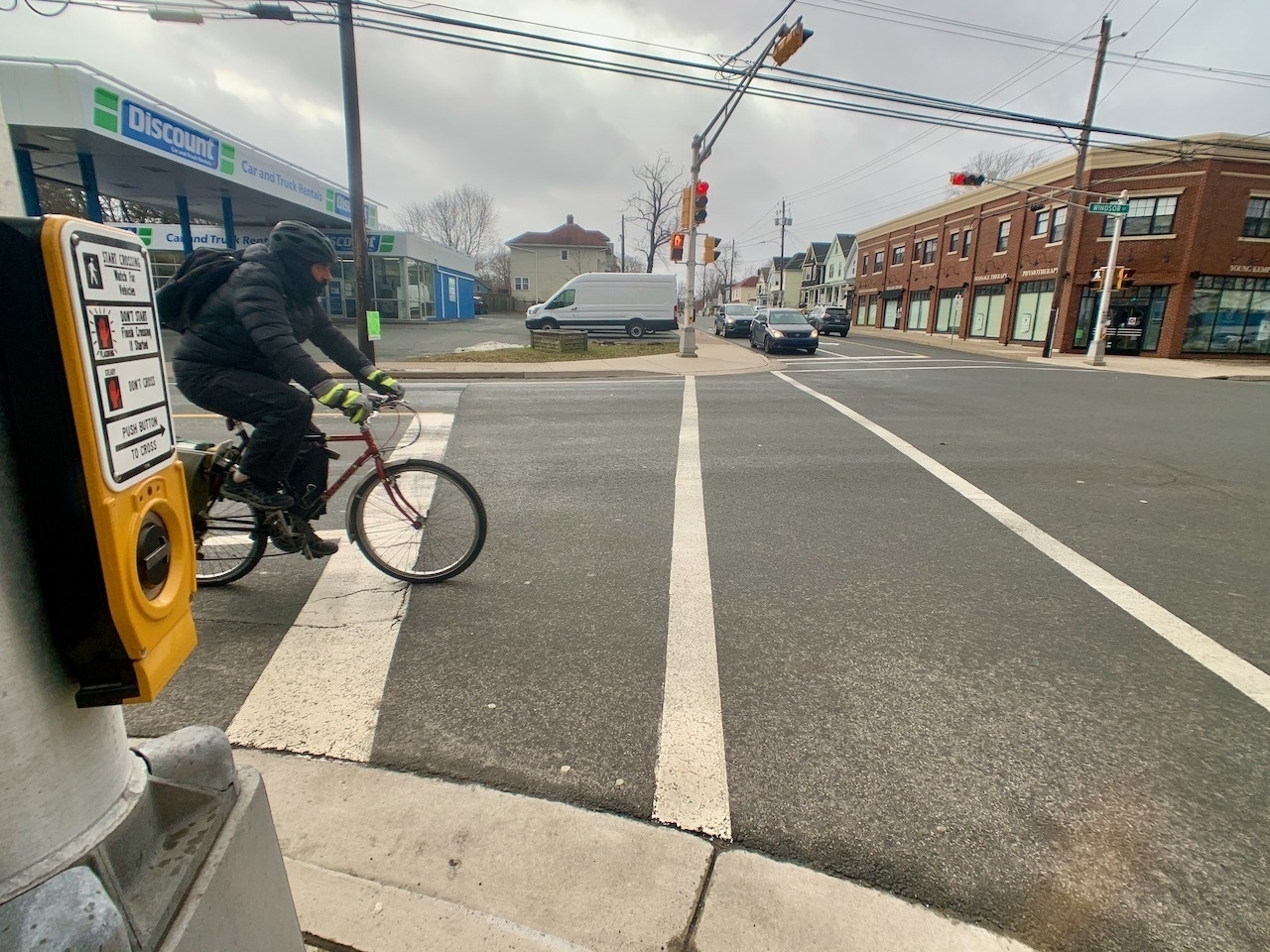
Let the people cross the street.



